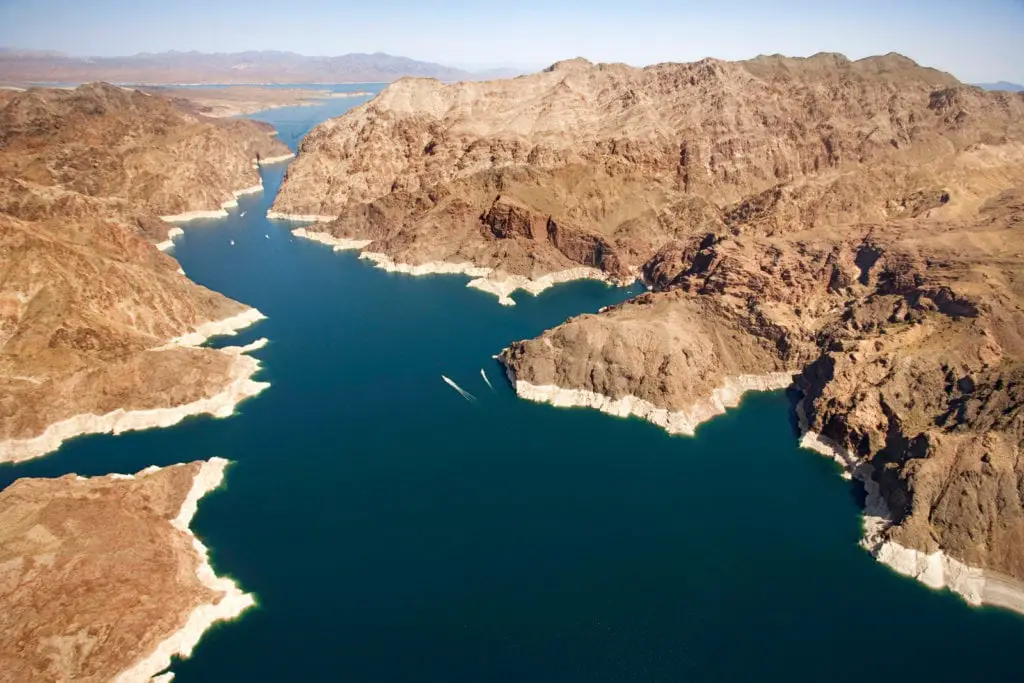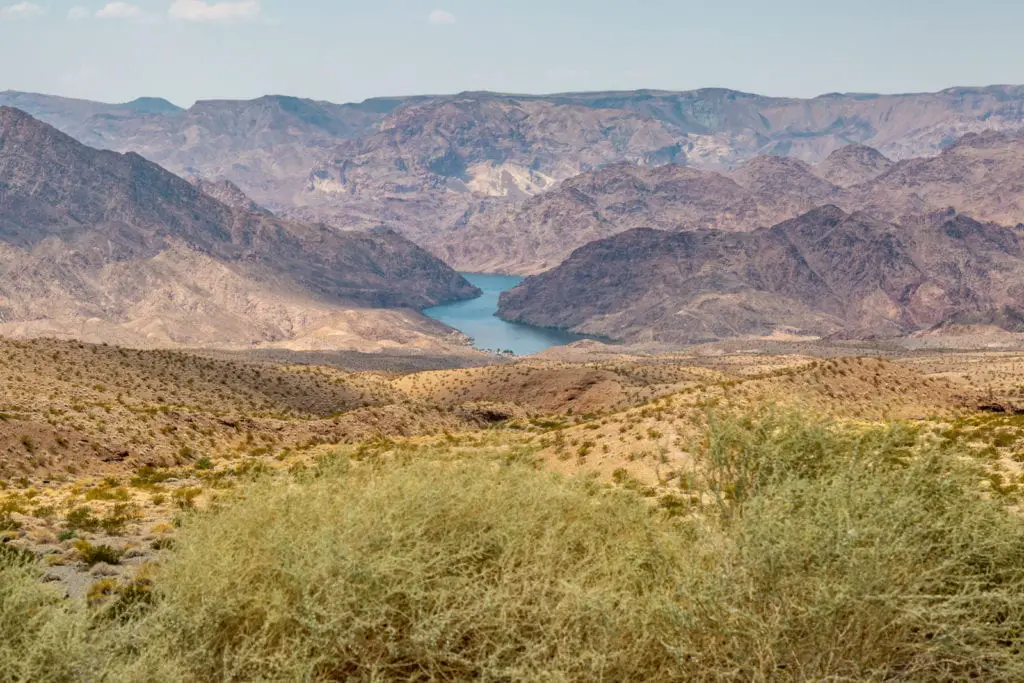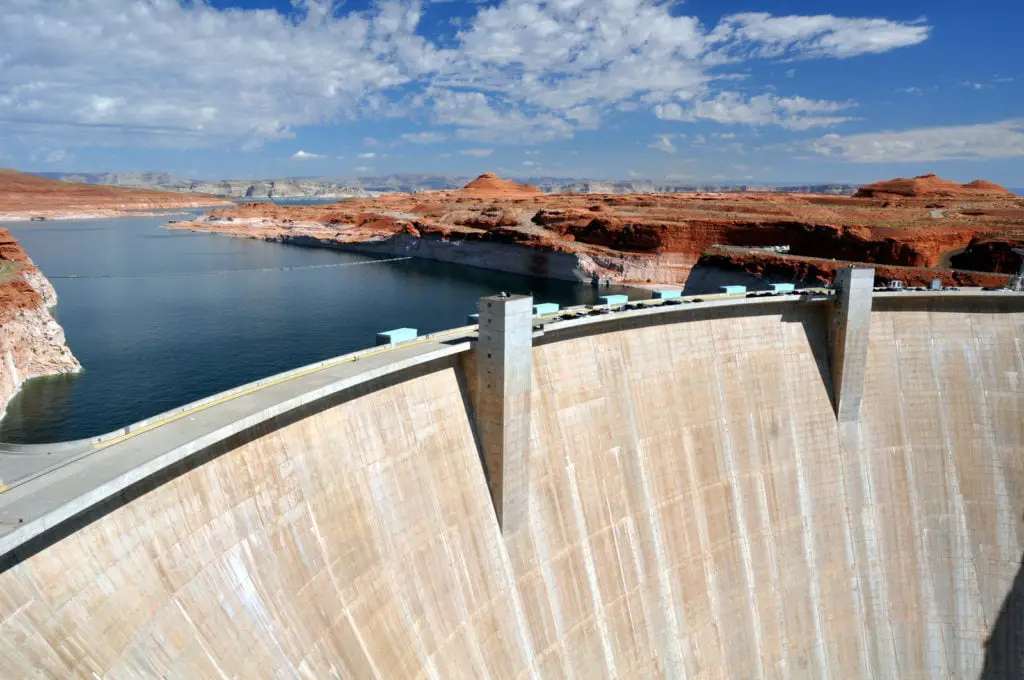Lake Mead is located in between southeastern Nevada and northwestern Arizona, Lake Mead National Park is a large reservoir on the main stem of the Colorado River. Here are 5 tips before visiting Lake Mead National Park as it’s the perfect outdoor playground offering 1.5 million acres of mountains, canyons, valleys, and two vast lakes. You’ll get your fix of fun with scenic views and a myriad of outdoor activities from summer to winter. Better yet, you can book your vacation whenever considering that this National Park is open year-round, 24 hours, 7 days a week. In this article, we’ll discuss some of the when’s, where’s, and what’s of Lake Mead National Park to get ourselves acquainted with this sun-filled, scenic area. Whether you’re nine or ninety-nine, you can find a comfortable park bench to enjoy the picturesque views for yourself. Keep reading to discover what this striking landscape under the desert stars has to offer.

1. What Lake Mead National Park is Known For
Lake Mead National Recreation Area became the first national recreation area in 1964 for those looking for both relaxation and fun in the desert lands. The reservoir was created by the damming of the Colorado River via the Hoover Dam. Thus, because it is man-made, it did take some time to get-going and actually began filling in late 1934. At full pool, Lake Mead is the largest reservoir in the United States by volume and is second only to Lake Powell in surface area. This lake measures 115 miles (185 km) upstream and is from 1 to 10 miles (1.6 to 16 km) wide.
Lake Mead is one of the most important water sources of the American West. Imagine walking miles in desert and seeing nothing but sand and then discovering a beautiful man-made lake as a safe haven. Lake Mead is a true oasis in a desert land. Moreover, just thirty miles southeast of Las Vegas, this park stands as an escape even more from the neon lights and crowded Las Vegas Strip. But this National Park is known for more than just being a refuge.
In fact, Lake Mead ensures a steady water supply for Arizona, Nevada, California, and northern Mexico by holding back the flow of the Colorado River behind the Hoover Dam. That means this man-made lake is responsible for providing over 25 million people with their drinking water.
Actually, Lake Mead has so much water that it has enough capacity to hold the entire average annual flow of the Colorado River for two years.
It is important to talk about the different basins of Lake Mead to understand all of its benefits. Lake Mead is divided into four large, deep, but connected basins that cover deep canyons and their steep walls along the historic Colorado River channel. These include (from upstream to downstream) the Gregg, Temple, Virgin, and Boulder Basins. Additionally, it is important to mention the Overton Arm which extends northward from the Virgin Basin to the confluence of the lake with the Virgin and Muddy Rivers. Each of these basins shows signs of the water level changes in the reservoir.
More than seeing the Hoover Dam from the waters of Lake Mead or Lake Mohave, you can also find solitude in one of the park’s nine wilderness areas. These wilderness areas were designated in 2002 to preserve the undeveloped land, so each one retains its primitive character and influence. This means that motorized vehicles or bicycles are not allowed in these wilderness areas. Yet, do not fear. There are other methods of transportation in these areas such as horse-back riding and good, old-fashioned hiking. Be sure to check out which wilderness area suits your interest by researching it here. Each wilderness area is unique, including its flora, fauna and geologic features.
So, it turns out Lake Mead is more than just a beautiful oasis- it is an important resource. Another reason to visit sooner rather than later is the fact that this oasis is currently in a water supply crisis. Scientists note due to growing demand, relentless shortage, and climate change, the Colorado River system has an average water deficit of almost 1 million acre-feet a year. This highly affects both vast lakes. Unfortunately, the scientists further predict that the Lake Mead Reservoir will probably never fill fully again. So be sure to visit Lake Mead National Park to see the beautiful water contrast against the desert lands and wilderness areas while it still exists in its prime.

2. What are the top spots to see at Lake Mead National Park
Lake Mead National Park is diverse, enormous, and full of scenic landscapes. While Lake Mead and Lake Mohave are the obvious top spots to see since they attract millions of tourists each year, many visitors return again and again for other reasons such as rediscovering one of their favorite coves, hiking a new trail, or simply to discover a new area of solitude. Whatever activity you may be in search for, we can guarantee some top-notch spots to see along the way. Here are some of the best must-sees at Lake Mead National Park.
- Lake Mead and Lake Mohave
- Hoover Dam
- Northshore Drive
- Mojave Desert
- Redstone Area
- Willow Beach
Lake Mead and Lake Mohave
It goes without saying that one of the top spots to see at Lake Mead National Park are the two immense lakes: Lake Mead and Lake Mohave. Better yet, you can see these lakes while doing a fun activity such as boating. With more than 290 square miles of waterway to navigate, boaters can enjoy the thrill of open water or relax in a private cove. If you would rather organize a calmer activity on the water, many tourists opt for renting a kayak or canoe on one of the lakes. Lake Mead hosts the perfect kayak or canoe trip for all levels (including those with no experience). You’ll discover many hidden coves—don’t forget to especially look for the popular Black Canyon!
Moreover, fishing on Lake Mead has become increasingly popular over the years. It is known for being home to striped bass. Some even document an occasional catch weighing in at over 40 pounds! Other popular fish include rainbow trout, catfish, sunfish, largemouth bass, smallmouth bass and crappie. Remember to review the rules and regulations on where fishing is available. Other water fun activities (including surfing on a lake) can be found here. You will be sure to find a water activity for yourself.
Hoover Dam
This is a highlight for many tourists in the area as it offers spectacular views and, if you are staying in Las Vegas, can be just a short-day trip. While there, take an elevator down into the dam to explore the power plant. There is also a free museum at the top of the dam which also offers great views. Be sure to take a walk over the Colorado River from Arizona to Nevada and back.
Northshore Drive
Though we mentioned that no cars are allowed in the nine wilderness areas of Lake Mead National Park, all of the areas around it offer incredible views all while you are relaxed in your car. So, start to plan that road trip. Northshore Drive is a 50-mile drive on the way to the Valley of the Fire State Park along the northwestern part of Lake Mead. You can also stop along the way and enter one of the wilderness areas- such as Redstone Hiking Trail. Whatever you do, be sure to stop off at the Northshore Summit Trail for a short hike up to an incredible viewpoint from the mountain.
Mojave Desert
Though many tourists come to Lake Mead national Park for Lake Mead and Lake Mohave, more than 87% of the park protects a vast area of the eastern Mojave Desert. So, get your camera ready for this scenic, rugged desert scenery that surrounds these two titanic lakes. People note that the best times to shoot photos are in that perfect “golden hour” period which is the early morning hours when the warm light of the sun is just peaking over the mountains or at dusk, when shadows and contrasts are most pronounced. The winter skies, spring flowers, summer recreation and fall clarity are all prime photographic opportunities. Be careful, however, as Mojave Desert is famous for having the hottest air temperature and surface temperature recorded on earth.
If you are less of a picture person and would rather get your hiking shoes dirty, Mojave Desert also has activities for you. A fan favorite is the Lava Tube which is a field of cinder cones that formed long ago by molten lava. A ladder takes hikers down into the tube where skylights (holes in the rock ceiling) illuminate a secret world. Other adventures in the Mojave Desert include hiking, animal-watching, and discovering exotic plants.
Redstone Area
This area is a must-see when in Lake Mead National Park. It is rich in history as it is comprised of many beautiful red Aztec sandstone outcroppings at the base of the mountains. The iron particles holding the sand together oxidized over time to turn the rocks red which now provides us with beautiful scenery. Sit on one of the many picnic benches in this area to look out onto the years of history. You may even spot some petroglyphs as well. Moreover, there are many hiking trails this sunny spot offers nearby that we’ll discuss later.
Willow Beach
This is a popular place to explore on the Arizona side of the Colorado River between Lake Mead and Lake Mohave. It is a particularly family-friendly beach that is also a fun place to swim. This park offers drinking water, picnic tables, a playground and public washrooms.
3. Hiking/Trails Information
One of the best ways to explore this diverse ecosystem is by foot, traveling across open expanses of rock formations that contain a myriad of colors. There are biking trails and hiking trails for every skill level. The best season for hiking is November through March when temperatures are cooler. Moreover, due to extremely high temperatures (sometimes 120 degrees Fahrenheit in the shade) in the summer months, hiking during the day is not recommended. If you don’t want to trek the grounds alone, there are ranger-guided hikes offered year-round. Check out the hiking trails in the Lake Mead area here and the Lake Mohave area here. Whether you are an expert hiker or a rookie, be sure to check out the important safety tips here.
Here is a list (in no particular order) of some of the best hiking and trails (and their miles and levels) offered in the Lake Mead National Park. However, do not forget that there are many more offered than just these!
- Fisherman’s Trail (Trail Level: Easy; 1.9 miles)
- Lake View (Trail Level: Moderate; 4.7 miles)
- Historic Railroad Trail (Trail Level: Easy; 1-2.2 miles) Note: Most tourists say this is a must for its superb views of Lake Mead. Moreover, it has five walkable tunnels that will take you to the Hoover Dam.
- River Mountains Loop (Trail Level: Moderate; 16.2 miles)
- Northshore Summit (Trail Level: Moderate; 1 mile)
- Redstone (Trail Level: Easy; 1.1 miles)
- Arizona Hot Spring (Trail Level: Challenging; 5 miles) Bonus: there is a hot spring at the top
- Owl Canyon (Trail Level: Moderate; 2.2 miles)
Moreover, here is a list of some of the best biking trails offered in Lake Mead National Park. Bicycles are subject to a $15.00 entrance fee at Lake Mead National Park (this fee lasts up to 7 days).
- Historic Railroad Trail
- River Mountains Loop Trail
- Rainbow Gardens Road
- Lava Butte Road
4. Camping Information (Campgrounds in the park, etc.)
There are several camping opportunities at Lake Mead National Park. Some sites are open to first come, first served visitors. Others you may reserve online or by contacting the concessioners. If you want to explore the backcountry like a true cowboy or cowgirl, this is the place to do it. Be sure you check the approved backcountry roads first and take an extensive look at the safety checklist as cellphone coverage may be minimal or non-existent.
Here is a list of some of the best campsites at Lake Mead National Park. More campground information such as fees, stay limits, pets, and more can be found here.
- Boulder Beach
- Callville Bay
- Echo Bay
- Las Vegas Bay
- Temple Bar
- Cottonwood Cave
- Katherina Landing
- Willow Beach
5. Where To Stay at Lake Mead National Park
If you would rather not try good, old-fashioned camping, do not fret as there are many lodging options available at Lake Mead National Park. From resorts to hotels, you will find the accommodation that best suits you. Be sure to also check out more modern-day options such as GlampingHub and Airbnb which offer original lodging types. Moreover, keep in mind that Sin City (Las Vegas) is not too far from this oasis if you would want to check out lodging there as well. We have included some hotels and resorts near or on Lake Mead National Park below.
- Cottonwood Cover Resort & Marina
- Lake Mohave Resort at Katherine Landing
- Temple Bar Marina Resort
- Hoover Dam Lodge Hotel & Casino
- Boulder Dam Hotel
- The Westin Lake Las Vegas Resort & Spa
- Quality Inn Boulder City
As you can see, Lake Mead National Recreational Park is home to numerous, fun-filled activities with gorgeous landscapes and no shortage of sunshine. Even more, its proximity to Las Vegas allows for tons of entertaining activities nearby. If you’re looking for your next adventure, whether it consists of relaxing at a resort while looking out onto the Mojave Desert, intense hiking to the Arizona Hot Spring, or having some fun in the sun and water, look no further than Lake Mead National Park.
Better yet, these are just the five things to know before visiting Lake Mead National Park—who’s to say you won’t stumble upon exciting adventures of your own? Pack up your RV to see all that this sunny, desert land has to offer.

